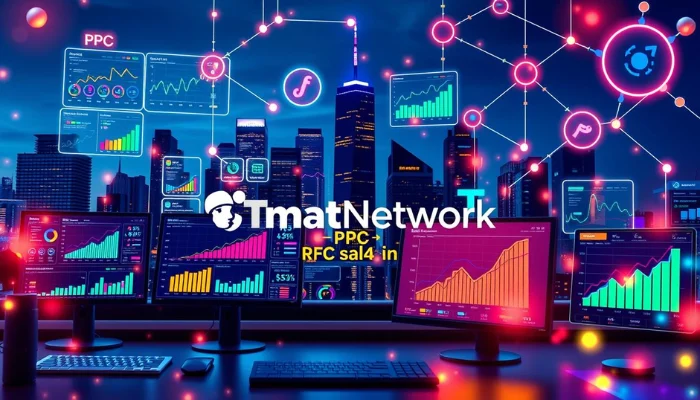
Internal linking is one of the most powerful yet underutilized tactics in search engine optimization (SEO). When implemented correctly, it helps search engines discover content on your website, distributes page authority, and improves user experience. In this article, we’ll explore what internal linking is, why it matters for SEO, and how businesses—especially those in Ohio—can implement an effective internal linking strategy for long-term digital growth.
What is Internal Linking?
Internal links are hyperlinks that point from one page on a domain to another page on the same domain. These links allow users and search engines to navigate through your site structure. Common types of internal links include:
- Navigation links in menus or footers
- Contextual links within blog content or product pages
- Call-to-action (CTA) buttons leading to contact forms or service pages
Why Internal Linking Matters for SEO
An effective internal linking strategy is critical for achieving SEO success because:
- Improves crawlability: Search engine bots use internal links to discover and index new pages.
- Distributes page authority: Links help pass ranking power (or “link juice”) to deeper pages.
- Enhances UX: Visitors stay longer and visit more pages, reducing bounce rate.
- Clarifies site structure: Proper linking helps search engines understand content hierarchy and relationships.
For businesses operating in highly competitive regions like United States, internal linking can significantly influence how well your content ranks in search results.
Key Elements of an Internal Linking Strategy
Developing an effective internal linking strategy involves more than randomly placing links on a page. Consider the following elements:
1. Use Descriptive Anchor Text
Anchor text is the clickable text in a hyperlink. Use relevant, keyword-rich phrases that tell both users and search engines what the linked page is about. For example, instead of saying “click here,” say “learn more about local SEO strategies.”
2. Link High Authority Pages to New or Low Authority Pages
Pages with more backlinks and traffic can pass their authority to newer or underperforming pages through internal linking. This helps those pages rank higher and get indexed faster.
3. Focus on Content Depth
If you have pillar content (such as a detailed guide), ensure it links out to supporting or sub-topic articles. Likewise, supporting articles should link back to the main pillar content. This structure is often referred to as a “content cluster” or “hub-and-spoke” model.
4. Avoid Overlinking
While internal linking is beneficial, overdoing it can be counterproductive. Too many links can confuse users and dilute the authority passed through each link. A good rule of thumb is 3–5 internal links per 1000 words of content.
5. Keep Your Links Relevant
Ensure your links are relevant to the context of the content. Linking to unrelated pages disrupts the user experience and can negatively impact SEO signals.
Internal Linking Tools and Tips
Here are a few tools and tips that can help streamline your internal linking strategy:
- Google Search Console: Use the “Links” report to identify internal linking patterns.
- SEO Plugins: Tools like Rank Math or Yoast SEO (for WordPress) can automatically suggest internal links.
- Site Audit Tools: SEMrush, Ahrefs, and Screaming Frog can identify orphaned pages with no internal links.
- Content Calendar Integration: Plan your internal linking strategy as part of your editorial calendar for consistency.
Internal Linking vs. External Linking
While both types of linking are essential for SEO, their functions differ:
- Internal Links: Navigate users within your site, helping search engines understand structure and relationships.
- External Links: Point to resources on other websites, building credibility and authority.
A strong SEO strategy includes both, but internal linking is the one you have the most control over.
Common Mistakes to Avoid
- Using the same anchor text for multiple links to different pages
- Not updating old content with links to new content
- Failing to link to important pages that need ranking boost
- Broken or outdated internal links
Benefits of Internal Linking for Local Businesses
For local businesses in Columbus, internal linking can:
- Improve visibility of location-specific service pages
- Increase page views and user session time
- Enhance local SEO efforts by linking related geo-targeted content
Conclusion
A well-structured internal linking strategy is essential for improving your website’s SEO, guiding users effectively, and enhancing the overall quality of your content architecture. At TmatNetwork, we help businesses design data-driven linking frameworks tailored to their niche, industry, and location.
Whether you’re targeting a global audience or boosting your local search presence in United States, internal linking is a sustainable, long-term SEO asset you can’t afford to ignore.
Need Help with Your SEO Strategy?
Let our experts at TmatNetwork design a custom internal linking plan that supports your site’s ranking, navigation, and user experience.
Contact TmatNetwork
- 🌍 Based in: Nigeria
- 📍 Location: Lagos, Nigeria
- 📱 Mobile: +234 803 318 2971
- 📧 Email: info@tmatnetwork.com
At TmatNetwork, we turn SEO complexity into clarity—one internal link at a time.

